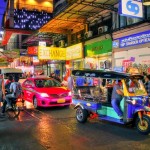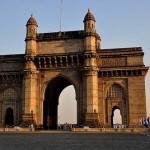The gladiators’ bloody Circus stands, A noble wreck in ruinous perfection!
- Lord Byron
One of the towering symbols of Italy tourism, a fixed destination in any Italy tourist package. When Ridley Scott made Russell Crowe a gladiator, he kindled a whole generations interest in the barbaric ‘art’ form. The UN Human Rights Council would have had a field day. But in 80 A.D, it was pure unadulterated entertainment. Ridley Scott’s movie was largely accurate in its portrayal of the Colosseum and the battles that waged within.
Nobody knows who designed the Colosseum. The Amphitheatrum Flavium, as it was originally called was built between 72 A.D and 80 A.D. It was initiated by Roman emperor, Vespasian (of the Flavian dynasty) and finished by his son, Titus. It was to be a pleasure palace for the people, built out of the booty from the Jewish War.
It was built near the giant statue of Nero (a Roman emperor who ruled from 54 A.D. to 68 A.D.), known as the Colossus of Nero, and occupied a significant part of the precinct of Nero’s park. That’s probably where the name Colosseum came from. The statue was later converted to one of Helios before it was plundered for its bronze.
The exterior is made entirely of travertine, stretching 527 m around and four stories high. Bronze clamps held the stones together. These were looted in 526 by the forces of the barbarian Totila. The arches of the second and third stories were originally filled with statues. There were 80 entrances, with the two principal ones reserved for the emperor and his entourage.
The interior is made of brick, tufa and marble; little of which survives today. The arena, where the action took place, was covered with a great wooden floor and canvas to make it waterproof. Over this was a layer of sand to absorb blood. “Arena” derives from the Latin word for sand.
There are underground tunnels that directly connect it to The Ludus Magnus or The Great Gladiatorial Training School.
And the whole Maximus-Lucilla love story, experts say there is evidence of Roman nobility falling for gladiators, what with them oozing raw sexuality and all?!
What exactly happened inside?
A whole bunch of gruesome, highly dangerous acts performed by untrained persons and animals with no safety equipment.
1. Gladiatoral Contests – The gladiators were slaves who battled with other gladiators, wild animals and condemned prisoners. They did have helmets and armour, but the rest of the body was left bare. Ooh la la Russell Crowe!
2. Navalia Proelia/Naumachiae – The mock sea battles. a part of the Coliseum was filled with water, and famous sea battles were reenacted.
3. Venatio – The animal hunts. Wild and exotic animals were hunted and killed in front of a large audience. For this purpose, animals such as rhinoceros, crocodiles, ostriches, hippopotamuses, bears, giraffes, lions, panthers, Caspian tigers, and elephants were specially imported from the Middle East and Africa.
4. Sylvae – Reproduction of folklore in natural settings. They were occasionally used to carry out executions of prisoners and other condemned people. The person to be executed played the hero of the tale, who was either killed by the beasts or burned to death.
5. Munera – Unsponsored shows, performed in public interest by individuals of the elite class. These involved strong religious elements at times, and were held in order to serve the society.
Of all the places to see in Italy, this one is an absolute must. Something even worthy of bucket lists; to experience the grandeur of the Colosseum!
Latest posts by Shivangi Rajendran (see all)
- Top 6 Places to See in Pondicherry - October 29, 2021
- Top 6 Places to See in Coorg - October 25, 2021
- Top 10 Activities to do in Pondicherry - October 24, 2021























